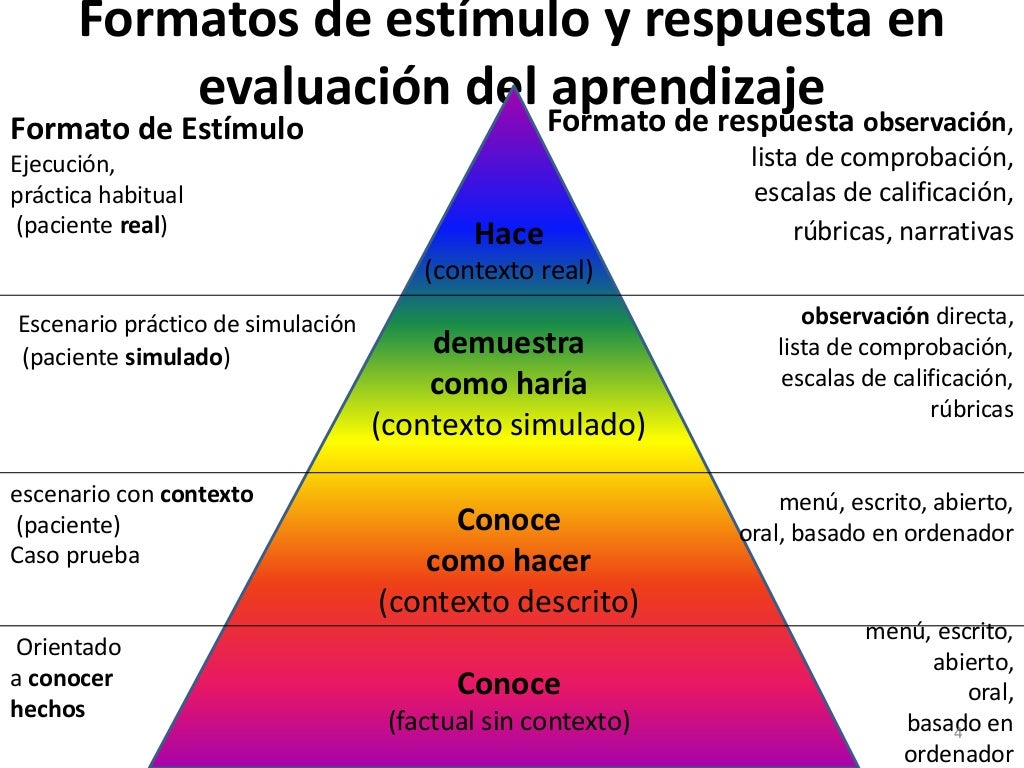
Evaluación auténtica y pirámide de Miller
Introduction. In 1990, George Miller outlined a new model for the assessment of clinical competency. 1 Miller argued that the traditional assessment of medical students relied too much on testing their knowledge, and not enough on assessing how they would behave in a real-life consultation. 1 His model, known as the 'Miller pyramid', was the basis for an important move away from the.
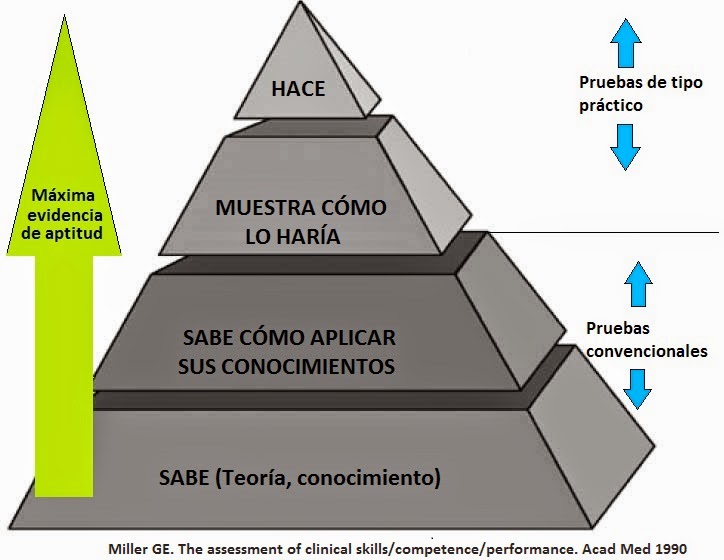
FEAE Asturias Evaluar competencias y la pirámide de Miller
Piramide van Miller Het piramidemodel van Miller (1990) beschrijft de ontwikkeling van een lerend persoon van beginneling tot en met het niveau van beroepsbekwaam. Het geeft de opbouw van een competentie weer, oplopend van relatief eenvoudig tot een complex niveau. De piramide werkt opbouwend: deze bestaat uit vier lagen waarbij de.

PPT DE PIRAMIDE VAN MILLER PowerPoint Presentation, free download ID832590
One of the most broadly used frameworks for assessing skills is Miller's Pyramid. This Pyramid has a series of levels of achievement beginning with knowledge (at the base) and ending with routine application in the clinical setting.

Driehoek van Miller Managementmodellensite
The pyramid includes a variety of evidence types and levels. Filtered resources: pre-evaluated in some way. systematic reviews. critically-appraised topics. critically-appraised individual articles. Unfiltered resources: typically original research and first-person accounts. randomized controlled trials. cohort studies.
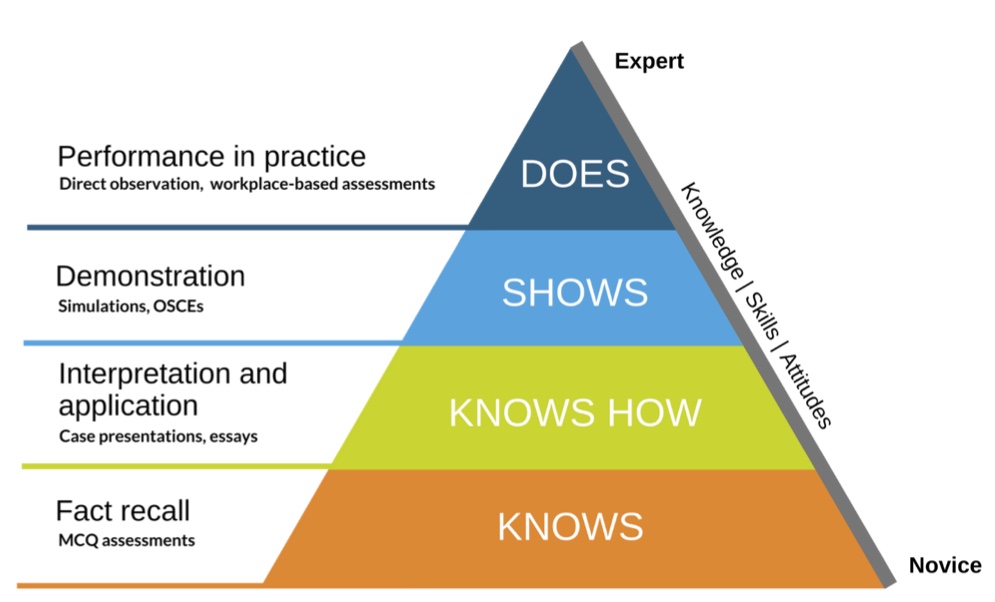
Miller’s Pyramid of Clinical Competence The iDea Book
Miller's pyramid of clinical competence was developed specifically for assessing students in health care settings. It is useful for aligning learning outcomes (or clinical competencies) with what learners should be able to do at any stage of the learning process. The figure below, adapted from Ramani and Leinster (2008), illustrates the.
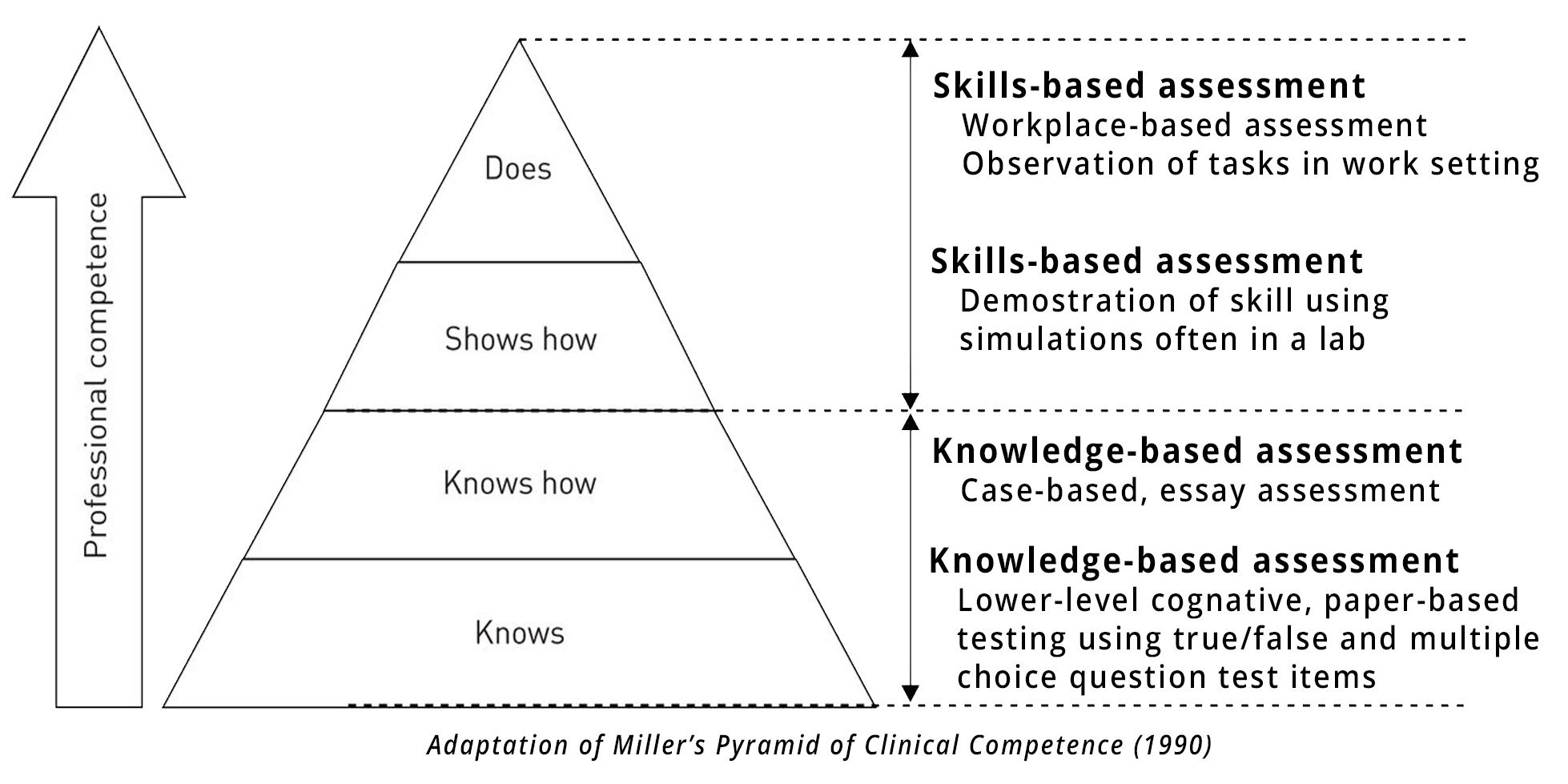
Millers Pyramid Performance Assessment Solutions by TrueAbility
St.Emlyn's. Miller's pyramid (1990) is a way of ranking clinical competence both in educational settings and in the workplace. As a framework it distinguishes between knowledge at the lower levels and action in the higher levels. It argues that to truly know whether our learners are achieving what we want them to achieve we should assess.

PPT DE PIRAMIDE VAN MILLER PowerPoint Presentation, free download ID832590
Background. Created in 1990 by George Miller, 1 Miller's pyramid (Figure 1) was initially created and utilized as a framework to clinically assess trainees at varying levels. 1 Starting with "knows", the base of the pyramid is based on knowledge and Miller opines is the easiest to assess. Simply, standard medical knowledge is tested through board examinations and medical school testing.

Download scientific diagram Pirámide de miller junto con sus aplicaciones. from publication B
Het piramidemodel van Miller (1990) beschrijft de ontwikkeling van een student tot en met het niveau van beroepsbekwaam. Het geeft de opbouw van de complexiteit van een competentie weer, oplopend van relatief eenvoudig tot complex (Van Berkel, Bax & Joosten-ten Brinke, 2017).
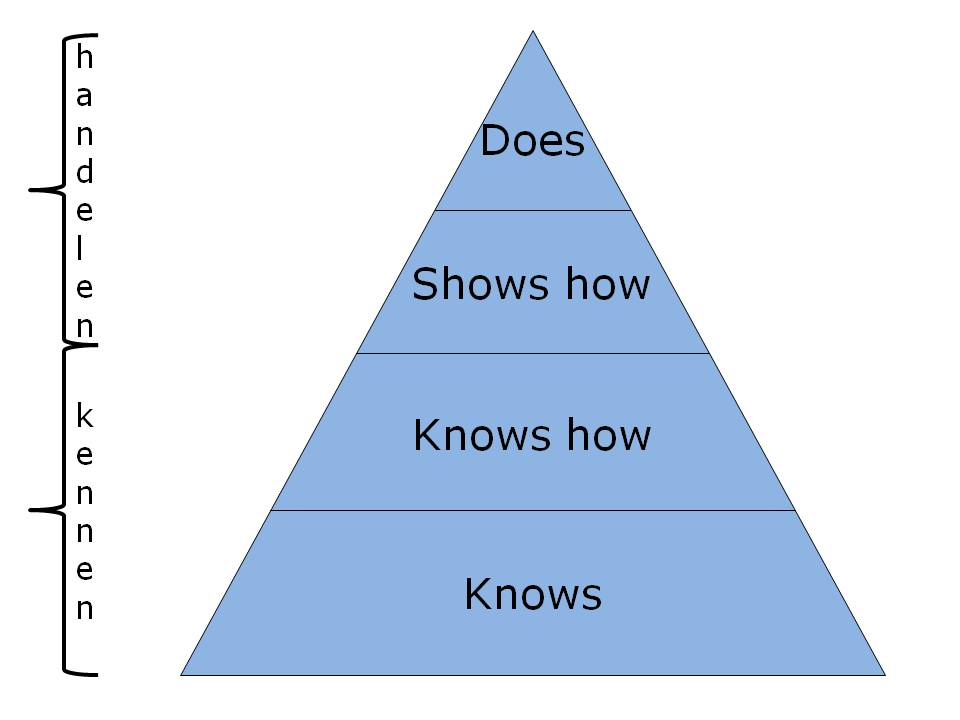
Rob Segers Driehoek van Miller
The iconic Miller's pyramid, proposed in 1989, characterizes 4 levels of assessment in medical education ("knows," "knows how," "shows how," "does"). The frame work has created a worldwide awareness of the need to have different assessment approaches for different expected outcomes of education and.

1. Pirámide de Miller Download Scientific Diagram
In het kort wordt hier de piramide van Miller besproken. Het is een hulpmiddel om de niveaus van bekwaamheid te schetsen en mijnsinziens is dit model breed inzetbaar. In de context van het medisch onderwijs maakt Miller (1990) gebruik van een piramide om de niveaus te schetsen waarop de bekwaamheid van geneeskundestudenten kan worden beschreven.

Cómo evaluar competencias? La Pirámide de Miller. English class
Je toetst de bewuste bekwaamheid (Doen in de Piramide van Miller) en het reflecterend vermogen van studenten (Evalueren in de Taxonomie van Bloom). Welke niveaus kun je toetsen? Binnen de Taxonomie van Bloom toets je met name het niveau van Evalueren. Andere niveaus komen ook aan bod, maar alleen in relatie tot de specifieke handeling/prestatie.

Miller 4 niveaus beroepsbekwaamheid Corrie van Gestel
Competente beroepsbeoefenaren zijn in staat om deze losse stukjes kennis, vaardigheden en houdingen te integreren (tot competenties), resulterend in adequaat professioneel gedrag in een variatie aan beroepsrelevante situaties (Van Berkel, 2012).

Visie
Competentietoetsing geeft zicht op: (1) het vermogen van de student om kennis, vaardigheden en houdingen te integreren in adequaat professioneel handelen in beroepsrelevante situaties; (2) de bewuste beheersing van de competenties; en (3) het ontwikkelvermogen van de student.

Scaling the Learning Pyramid OSCE Medical Education Experts
It is therefore proposed that a fifth level be added at the apex of the pyramid. This level, reflecting the presence of a professional identity, should be "Is," and methods of assessing progress toward a professional identity and the nature of the identity in formation should be guided by currently available methods. In 1990, George Miller.

Basisontwerp van toetsing in de gehele cursus Radboud Universiteit
We would like to show you a description here but the site won't allow us.

Evaluación auténtica y pirámide de Miller
In de context van het medisch onderwijs maakt Miller gebruik van een piramide om de niveaus te schetsen waarop de bekwaamheid van geneeskundestudenten kan worden beschreven. Onderliggende niveaus vormen steeds het fundament voor de bovenliggende laag. Knows (het weten: toetsbare kennis)